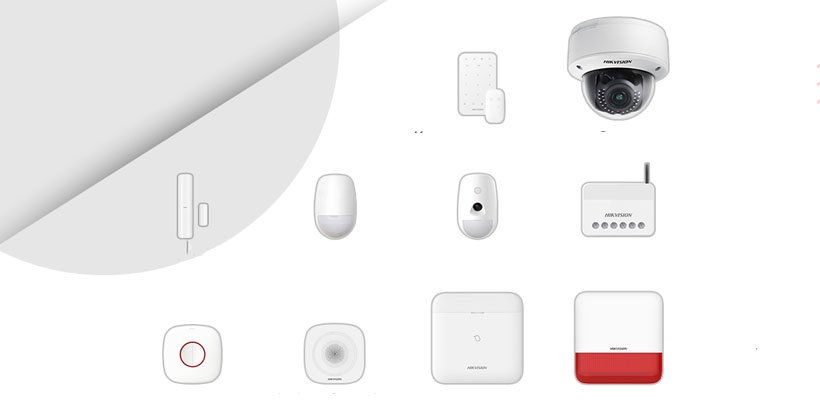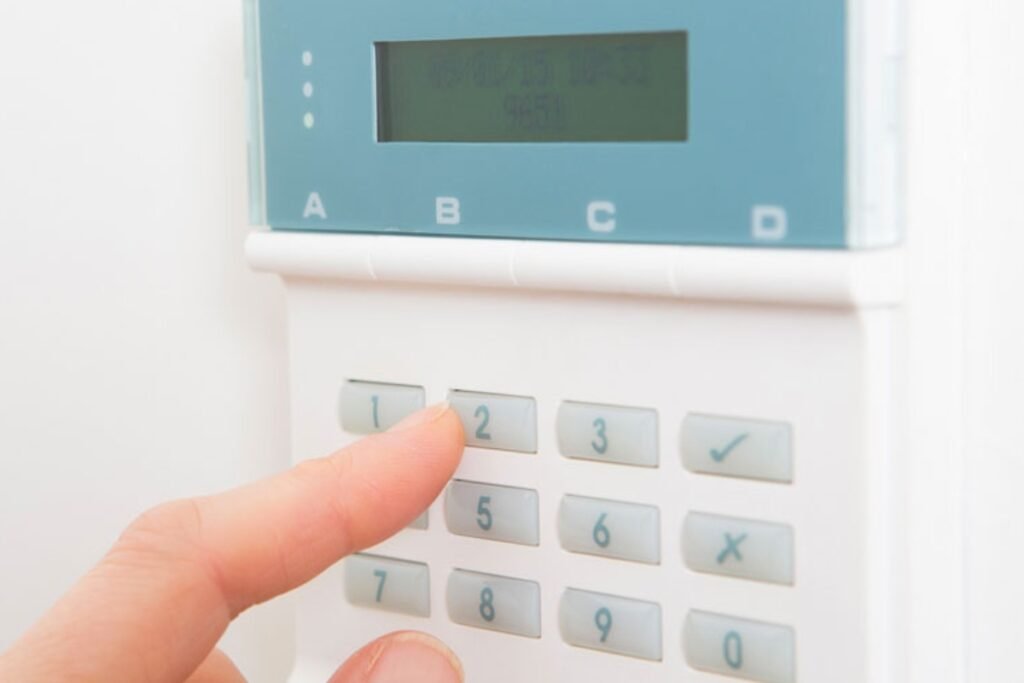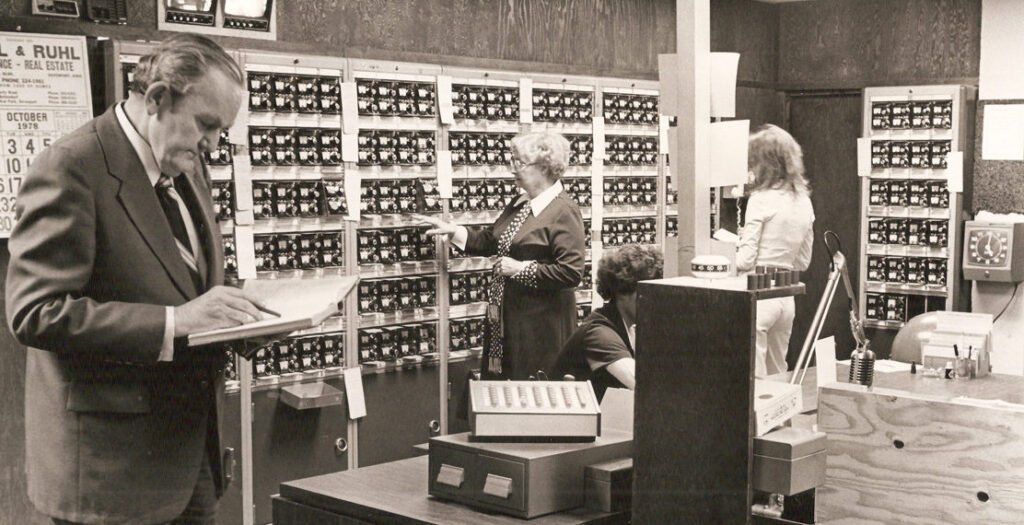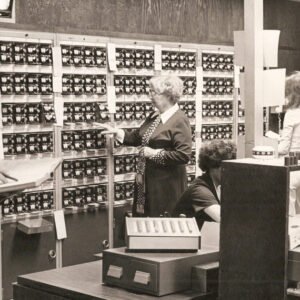Discover the fascinating evolution of alarm systems and explore the modern features offered by today’s top brands. From Ring and Nest to Arlo and Wyze, there is a wide range of options available to enhance your home security. With brands like SimpliSafe, Eufy Security, and Blink pushing technological boundaries, alarm systems now offer advanced features such as remote access, motion detection, and even facial recognition capabilities. Whether you’re interested in smart locks from August Home or the industry-leading monitoring services offered by Vivint and ADT, this article will delve into the latest innovations and brands shaping the future of home security. Stay tuned to find out which alarm system will suit your needs.

Introduction
Alarm systems have come a long way since their inception, evolving from basic systems that simply alerted homeowners to the presence of intruders, to sophisticated smart home devices that offer a wide range of features for enhanced security and convenience. In this comprehensive article, we will explore the evolution of alarm systems, highlighting the transition from traditional systems to the modern technologies available today. We will also delve into the various features that define modern alarm systems, and provide a comprehensive overview of the most popular and noteworthy alarm system brands in the market.
Evolution of Alarm Systems
Traditional Alarm Systems
Traditional alarm systems were predominantly hardwired systems that relied on physical connections to transmit signals and trigger alarms. These systems primarily consisted of sensors placed at vulnerable points such as doors and windows, connected to a central control panel. When a sensor detected a breach, an alarm would sound to alert the occupants of the property or neighbors of a potential break-in.
While traditional alarm systems provided a basic level of security, they were limited in their capabilities and lacked the advanced features available in modern systems.
Transition to Digital Technology
With the advent of digital technology, alarm systems underwent a significant transformation. The transition from traditional hardwired systems to wireless alarm systems marked a major milestone in the evolution of these security devices. Wireless alarm systems eliminated the need for physical connections, allowing for greater flexibility in sensor placement and ease of installation.
Wireless alarm systems utilize radio frequencies to transmit signals between sensors and the control panel. This wireless connectivity not only simplified installation but also enhanced the overall effectiveness of the system. It enabled sensors to communicate seamlessly with the control panel, ensuring real-time monitoring and faster response times.
Integration with Smart Home Devices
The integration of alarm systems with smart home devices brought about a paradigm shift in the industry. Smart home technology introduced a new level of convenience and control, allowing homeowners to remotely monitor and manage their alarm systems from anywhere with an internet connection.
Modern alarm systems seamlessly integrate with a wide range of smart home devices, including door locks, lighting, thermostats, and video doorbells. This integration enables users to control these devices through a single mobile app, providing a truly holistic approach to home security and automation.

Modern Features of Alarm Systems
Wireless Connectivity
Wireless connectivity is a fundamental feature of modern alarm systems. By eliminating the need for physical connections, wireless alarm systems offer greater flexibility in sensor placement, making it easier to secure every vulnerable point in a property. The wireless nature of these systems also enhances their reliability, as there are no physical wires that can be tampered with or compromised.
Mobile App Control
Mobile app control is a game-changer in the world of alarm systems. With a dedicated mobile app, users can remotely arm or disarm their alarm systems, receive real-time alerts, view live video feeds, and even control other connected smart home devices. This level of control and convenience puts homeowners in charge of their security, providing peace of mind wherever they may be.
Remote Monitoring
Remote monitoring is another crucial feature of modern alarm systems. Users can access their alarm systems remotely through the mobile app or web portal, allowing them to monitor the status of their system, receive alerts, and view live or recorded video feeds. This feature enables homeowners to keep an eye on their property, even when they are away on vacation or at work.
Video Surveillance
Video surveillance is a powerful tool in deterring and identifying potential intruders. Modern alarm systems often include cameras that can be strategically placed both indoors and outdoors to provide comprehensive coverage of the property. These cameras can capture high-definition video footage, which can be accessed remotely for real-time monitoring or review in the event of an incident.
Motion and Entry Sensors
Motion and entry sensors are the backbone of alarm systems, detecting any unauthorized entry or movement within the protected area. These sensors can be placed at doors, windows, and other vulnerable points, and can trigger an alarm or send an alert when a breach is detected. The integration of motion and entry sensors allows for comprehensive security coverage, ensuring that no potential intruder goes undetected.
Home Automation Integration
The integration of alarm systems with home automation devices opens up a world of possibilities. Home automation allows users to create customized routines and schedules for their alarm systems, as well as control other connected devices such as lights, thermostats, and door locks. This integration not only enhances convenience but also improves energy efficiency and overall home management.
Voice Control
Voice control has become increasingly popular in alarm systems, thanks to the widespread adoption of virtual voice assistants like Amazon Alexa and Google Assistant. With voice control, users can effortlessly arm or disarm their alarm systems, check the status of their security devices, and control other connected smart home devices, all through simple voice commands.
Cloud Storage
Cloud storage is a valuable feature for alarm systems with video surveillance capabilities. Instead of relying on local storage devices, cloud storage allows users to securely store video footage in the cloud, ensuring that it is readily accessible even if the physical recording device is compromised or damaged. Cloud storage also offers the advantage of remote access, enabling users to view recorded video footage from anywhere with an internet connection.
Intelligent Alerts
Intelligent alerts go beyond just notifying users of an alarm event. Modern alarm systems are equipped with advanced technology that can differentiate between true security threats and false alarms, reducing the risk of unnecessary notifications. Intelligent alerts can also provide detailed information about the nature of the alarm event, such as which sensor was triggered or the presence of unrecognized faces on the video feed.
Professional Monitoring
Professional monitoring provides an added layer of security and peace of mind. With professional monitoring, a dedicated security team is alerted whenever an alarm event occurs. These professionals can quickly assess the situation, verify the alarm, and dispatch the appropriate authorities if necessary. Professional monitoring ensures a swift and effective response to potential security threats, even when the homeowner is unavailable or unable to respond.

Popular Alarm System Brands
Ring
Ring has established itself as a leader in the alarm system industry, offering a range of innovative products and services. Their alarm systems provide easy-to-install wireless solutions with integrated cameras, enabling users to monitor their property through the Ring mobile app. Ring also offers professional monitoring services for enhanced security.
Nest
Nest, owned by Google, is known for its smart home devices, including alarm systems. Their alarm systems seamlessly integrate with other Nest products, such as cameras and video doorbells, providing comprehensive home security and automation. Nest also offers professional monitoring services and mobile app control for added convenience.
Arlo
Arlo specializes in wireless security camera systems and has expanded its product line to include alarm systems. Arlo alarm systems incorporate their high-quality cameras, allowing for video verification and real-time monitoring. These systems offer wireless connectivity, mobile app control, and advanced features such as two-way audio communication.
Wyze
Wyze is a relatively new player in the alarm system market but has gained popularity for its affordable and feature-packed products. Wyze alarm systems offer wireless connectivity, mobile app control, and integration with other Wyze smart home devices. Despite their affordability, Wyze maintains a strong focus on quality and user satisfaction.
SimpliSafe
SimpliSafe offers comprehensive DIY alarm systems designed to be easy to install and operate. Their systems provide wireless connectivity, mobile app control, and the option for professional monitoring. SimpliSafe is known for its straightforward installation process, affordability, and the flexibility to customize the system to suit individual security needs.

Other Noteworthy Brands
In addition to the popular alarm system brands mentioned above, there are several other noteworthy brands in the industry. These brands offer a range of features and cater to different security needs. Some of these brands include:
- Eufy Security
- Blink
- August Home
- Honeywell Home
- Ring Alarm
- Vivint
- Abode
- Swann
- Reolink
- TP-Link Kasa
- Logitech Circle
- ADT
- Schlage
- First Alert
- Kangaroo
Each of these brands brings its unique strengths to the table, whether it’s advanced technology, reliable performance, or a wide range of compatible devices. Homeowners should consider their specific security requirements and budget when choosing an alarm system brand that best suits their needs.
In conclusion, the evolution of alarm systems has seen a remarkable progression from traditional systems to the advanced technologies available today. Modern alarm systems offer a wide range of features, including wireless connectivity, mobile app control, video surveillance, and integration with smart home devices. Popular brands such as Ring, Nest, Arlo, Wyze, and SimpliSafe have made a significant impact in the market, while other noteworthy brands also offer valuable options for homeowners seeking enhanced security and convenience. With the wide variety of alarm system brands and features available, homeowners can now find the perfect solution to protect their homes and loved ones with ease.

